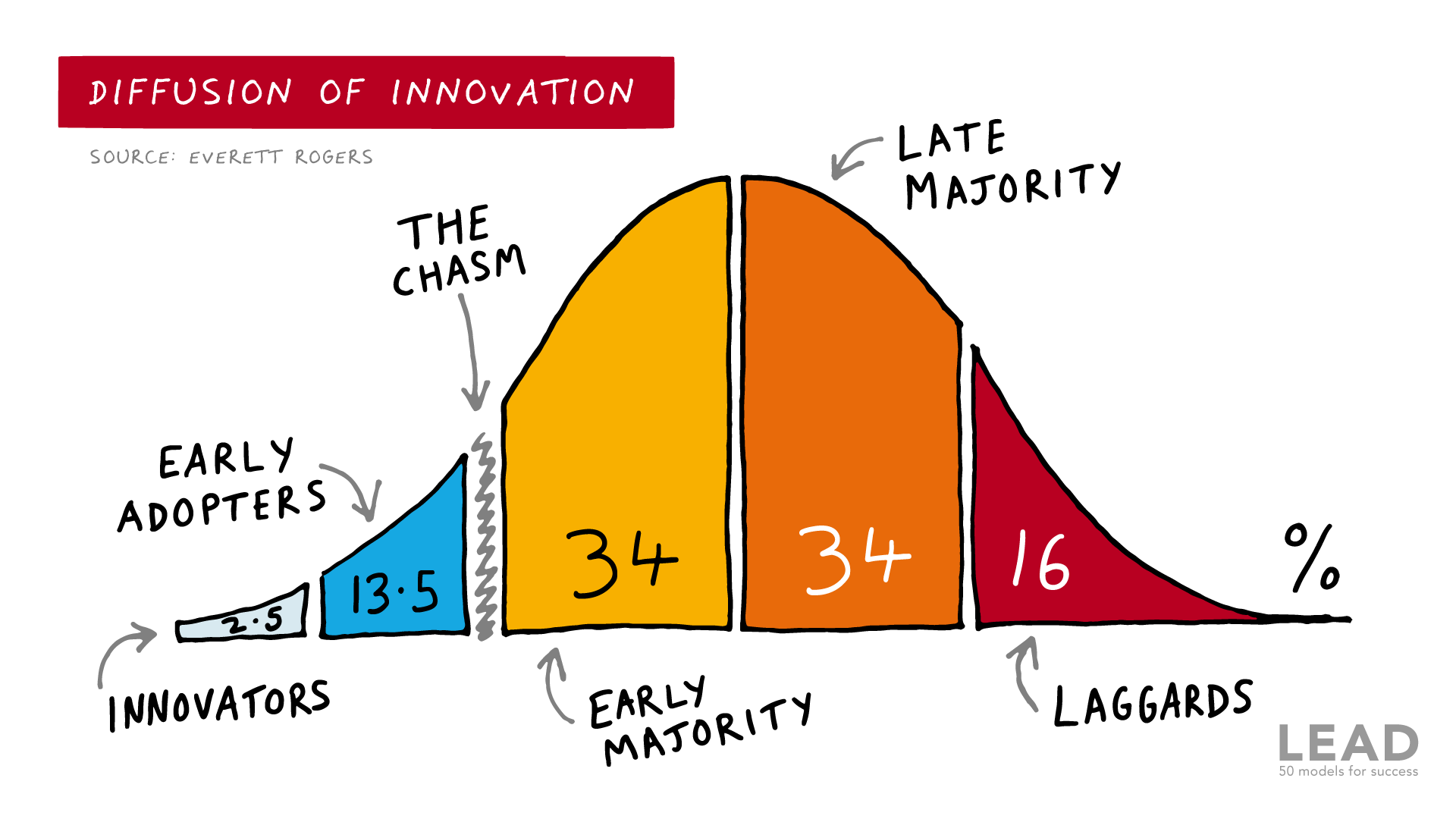Youtube is one of the fastest growing websites of all time and currently serves as the second most visited website on the internet. However, this does not mean that everyone visits Youtube. Looking at Youtube through the lens of the diffusion theory, one can acknowledge the quick spread while also understanding why not everyone has caught onto it.

What is the diffusion theory though and how does it relate to Youtube and its audience? According to Everett Roger's Diffusion Theory, diffusion of innovations is "a theory that seeks to explain how, why, and at what rate new ideas and technology spread". His theory covers the experimental pioneers, early adopters, early majority, late majority, and laggards.
So how does this relate to Youtube? Being that youtube was such a fast growing mainstream internet tool, it allowed for anyone to be able to upload videos to the internet with a few simple clicks. Before this, people had to be very technologically advanced in order to upload videos. Youtube's initial purpose was for people, no matter their knowledge of technology, to be able to upload any video they want. This idea was a huge contribution to the rapid success of Youtube.
Early Adopters & Early Majority
People also not only grasped onto the idea of Youtube so quickly because of how accessible it was to upload, but it was also very easy to view videos. People learned how to do things by watching videos, listened to music, and got entertainment through random videos. All of these people who used Youtube right away would be considered the Early Adopters.
These early adopters were some of the first to actual help the platform grow. Although they weren't the experimental pioneers, who were actually the first people to use it, the early adopters played a large part in the success of the platform.
A prominent name that would be considered an early adapter of Youtube would be Google. Just one year after the grand debut of Youtube, Google purchases the website for over $1 billion dollars. Google saw the potential and jumped on it before any other company could.
Google's position as an early adapter still remains in tact as Youtube is still owned by Google. After the early adopters came into play and made the platform much more prominent, the early majority followed. The early majority came quick as Youtube grew so quickly. More and more people began to recognize the influence Youtube had not only on society, but also social media which was growing just as quickly.
What could still be considered early majority, people began making careers out of Youtube. These people although not early adapters, changed the scene for Youtube and became early adapters for Youtube as a career. Now, there are hundreds of thousands of people who upload videos daily, with goals of making a career out of it.
Late Majority & Laggards
With Youtube being nearly 20 years old, we are now in the period where, if someone is just starting to use the platform, thy would be considered Late Majority. This period of maturation from early majority and late majority separates those who constantly go on Youtube from those who may go on it every now and then.
Whether they are looking up a how to video or playing their favorite song, the late majority doesn't use Youtube quite as much as the early majority, and could be grouped as the older generations. However, members of the older generation that don't use Youtube for anything could be considered the laggards.
The laggards either do not want to use Youtube, don't know how to use it, or do no have access to it. Regardless of the reasoning, there is still a good amount of people who would be considered laggards with this platform. Although Youtube is extremely popular, there will always be a group of people to never search YouTube.com on their computer.






No comments:
Post a Comment